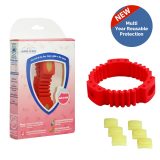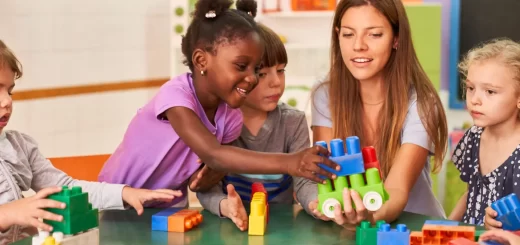Essential Childproofing Tips for a Safe Home
Children are naturally curious and love to explore their surroundings, making childproofing an essential task for any parent or guardian. Creating a safe home environment for your child is crucial to prevent accidents and promote their well-being. In this article, we will discuss several childproofing tips to help you make your home a secure place for your little ones.
1. Introduction
Introduce the importance of childproofing and its role in ensuring a safe home environment for children.
2. Assessing the Risks
Identify the need for assessing potential risks in different areas of the house and conducting a thorough home safety audit.
2.1 Identifying Common Hazards
Highlight common hazards such as sharp edges, choking hazards, and toxic substances that should be considered during childproofing.
2.2 Conducting a Home Safety Audit
Explain the process of conducting a home safety audit, which involves inspecting each room and identifying potential risks and hazards.
3. Childproofing the Kitchen
Discuss specific measures to childproof the kitchen area, considering the potential dangers it poses to children.
3.1 Securing Cabinets and Drawers
Explain the importance of installing childproof locks and latches on cabinets and drawers to prevent access to dangerous objects and substances.
3.2 Installing Safety Latches
Highlight the significance of using safety latches on appliances, such as ovens and refrigerators, to prevent children from opening them and getting hurt.
3.3 Storing Hazardous Items Properly
Provide guidance on storing hazardous items, such as cleaning products and sharp utensils, in secure places out of children’s reach.
4. Childproofing the Living Areas
Offer childproofing tips for living areas, where families spend a significant amount of time together.
4.1 Securing Furniture and TVs
Advise on securing furniture and TVs to prevent tip-overs, which can cause severe injuries to children.
4.2 Covering Electrical Outlets
Emphasize the importance of covering electrical outlets with childproof covers to prevent children from inserting objects or their fingers into them, reducing the risk of electrical shocks.
4.3 Using Cordless Window Coverings
Highlight the need for cordless window coverings to eliminate the risk of accidental strangulation caused by window blind cords.
5. Childproofing the Bathroom
Provide essential childproofing tips specifically for the bathroom, where there are potential hazards related to water and toiletries.
5.1 Preventing Drowning Hazards
Stress the importance of never leaving young children unattended in the bathroom and discuss measures such as using non-slip mats and keeping toilet lids closed to prevent drowning accidents.
5.2 Securing Toilets and Cabinets
Explain how installing toilet seat locks and securing cabinets with childproof latches can prevent children from accessing hazardous substances and toiletries.
5.3 Temperature and Water Control
Advise on adjusting the water heater temperature to avoid scalding and installing faucet covers to protect children from hot water burns.
6. Childproofing the Bedroom
Provide childproofing suggestions for the bedroom to ensure a safe sleeping and playing environment for children.
6.1 Creating a Safe Sleep Environment
Recommend guidelines for safe sleep, such as using a firm crib mattress, avoiding pillows and blankets, and ensuring the crib meets safety standards.
6.2 Securing Furniture and Window Treatments
Explain the importance of anchoring furniture to prevent tipping and using cordless window treatments to eliminate the risk of strangulation.
7. Childproofing the Outdoors
Discuss childproofing measures for the outdoor areas, such as the backyard or front yard, where children often engage in physical activities.
7.1 Fencing the Yard
Encourage the installation of sturdy fencing around the yard to provide a safe and secure play area for children.
7.2 Removing Toxic Plants
Highlight the significance of identifying and removing toxic plants from the outdoor spaces to prevent accidental ingestion or contact.
7.3 Ensuring Playground Safety
Provide tips for ensuring playground safety, including inspecting equipment for potential hazards, using soft ground coverings, and supervising children during playtime.
8. Emergency Preparedness
Address the importance of being prepared for emergencies and discuss essential measures that can protect children in critical situations.
8.1 First Aid and CPR Training
Encourage parents and caregivers to undergo first aid and CPR training to respond effectively to accidents or emergencies involving children.
8.2 Installing Smoke and Carbon Monoxide Detectors
Highlight the importance of installing smoke detectors and carbon monoxide detectors on each floor of the house for early detection of potential hazards.
8.3 Creating an Emergency Plan
Guide readers on creating an emergency plan that includes escape routes, meeting points, and important contact information to ensure the safety of children during emergencies.
9. Conclusion
Summarize the importance of childproofing a home to create a safe environment for children and emphasize that implementing these tips can significantly reduce the risk of accidents and injuries.
10. FAQs
- How early should I start childproofing my home?
- Are there any specific products or brands you recommend for childproofing?
- How often should I update my childproofing measures?
- What should I do if my child swallows a hazardous substance?
- Can I childproof my home without compromising its aesthetic appeal?















